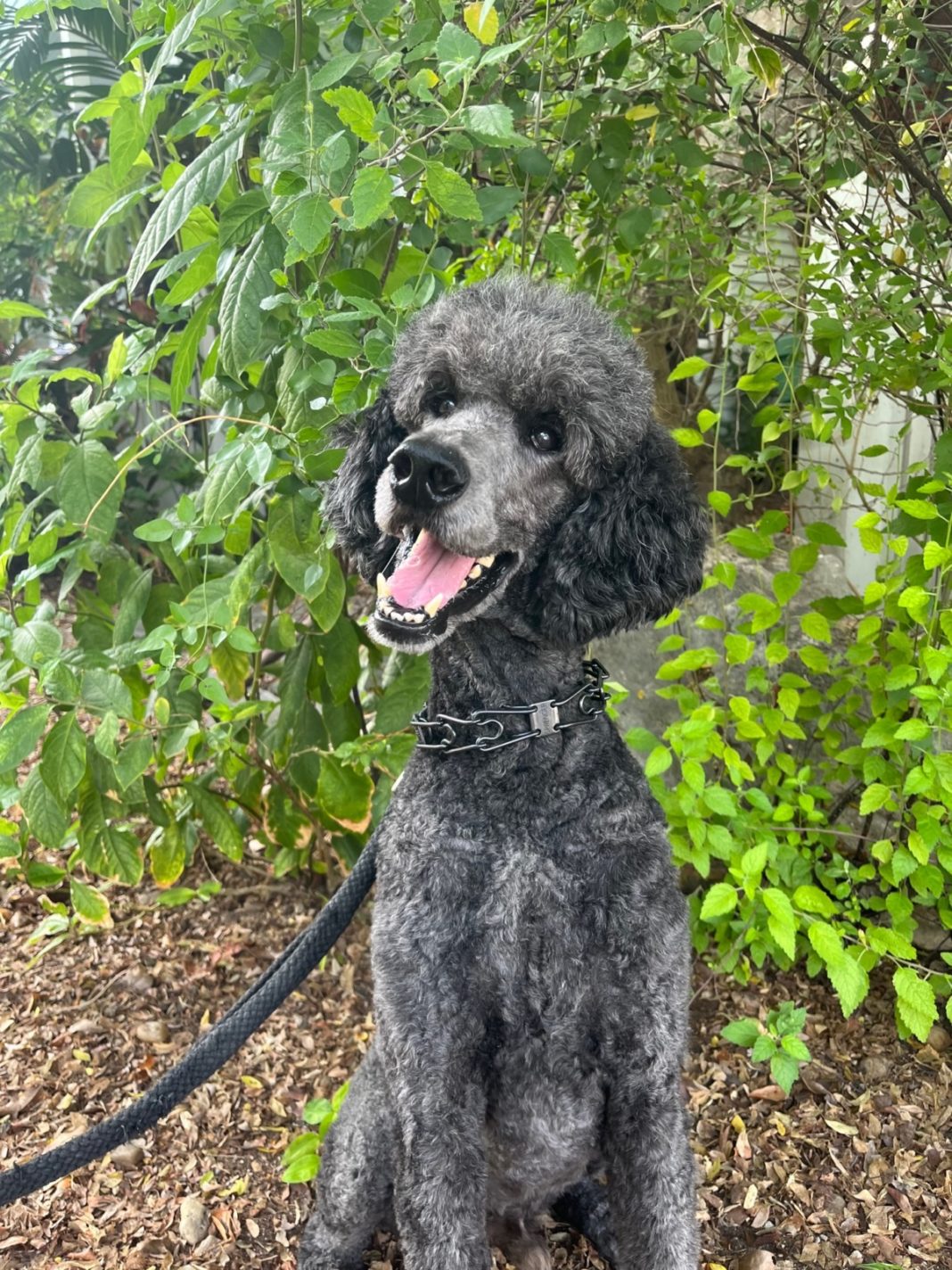The first summer that I walked Ozzy down the streets of Key West, he pulled me from one side of the street to another, gravitating to shady spots. I knew my dog was smart, but this really impressed me. He’s a shade hunter, I thought. What a brilliant dog.
Then I realized it wasn’t shade he was honing in on, but the anole lizards darting in and out of the shade. Ozzy is a standard poodle, a breed whose unfortunate dog-show haircuts mistakenly make people think they are fancy fur accessories. In reality, they are true hunting dogs.
As a hunting dog with limited options in Key West, Ozzy has become obsessed with lizards, from small anoles to Cuban browns. And he knows where they like to hang out in the shade.
So maybe he’s not as brilliant as I thought, but he has the right idea. For anyone, staying in the shade and keeping cool is a good idea during our hot summers. But it’s especially important for our pups, who are more sensitive to heat than you might realize.
Dogs have a higher body temperature than humans and less ability to cool down. While we sweat from our pores, dogs’ sweat glands are confined to the nose and foot pads. Overheated dogs can only regulate body temperature through panting, which is highly inefficient during hot weather, and can bring on heat exhaustion, a potentially fatal condition that can lead to heat stroke and cardiac arrest.
Avoid overheating by modifying your dog-walking routines. Think shorter walks and less intense activity. And be aware of how your dog is doing during the walk. Pay attention to panting and paws. Sidewalks and roads can get very hot. Try pressing your palms on asphalt or sidewalks when walking with your pal. If it’s hot to you, it’s super hot to them. Keep their paws on grass or dirt when possible. And take water, plus something for your pet to drink it from (small collapsible bowls and doggie drink/sip cups are available at most local pet shops or online). And of course, take the big walks early in the morning and later in the evening.
It should go without saying, but unfortunately it has to be mentioned: dogs should never be left alone in a car, especially in hot weather. When it’s 85 degrees outside, a parked car will heat up to 102 degrees in 10 minutes, even with the windows open. And at 95 degrees – our average summer temperature in the Keys — a car will heat up to 120 degrees in 10 minutes.
If you take your dog with you on car trips, plan on taking them to places you can bring them inside with you. Many Keys establishments are dog-friendly. Besides our open-air restaurants, many shops and even chain stores like The Home Depot welcome well-behaved pets.
But taking your dog to outdoor events in the summer is not a good idea. As a person who has coordinated many large, open-air festivals, I have seen too many heat-stressed dogs walking on concrete and asphalt to ever think it is fun for them. If you do decide to take them, make it a short visit. Bring lots of water for them to drink, and try keeping them under shade and on grass.
Because Oz loves to be with us, my husband and I sometimes take him on summer car rides, often to shaded places to walk or short shopping trips where we take turns staying in the air-conditioned car while the other goes shopping. It seems to be a Keys thing for pet parents to leave their dogs alone in the car with the a/c on, but The Humane Society advises that even that is risky, especially for an extended time. If you see a pet left alone in a non-cooled car during hot weather, take action by seeking the owner or call for help. Our police department is very aware of the dangers and takes this situation seriously.
A lot of dogs love the water, and a lot of boaters love to take them, but long days on the water can be mighty hot. If you don’t already have a covered area over the deck, consider rigging some shade for your dog. Cooling mats are an inexpensive and effective way for dogs to chill out, and it makes a lot of sense to have them onboard. In addition to plenty of water, consider adding frozen treats, such as “Pupsicles” (frozen cubes of chicken or beef bouillon) to the cooler along with your beer and fried chicken.
Here in the Keys we need to realize that not just the temperature, but also the humidity can affect our pets. According to Dr. Barry Kellogg of the Humane Society Veterinary Medical Association, animals pant to evaporate moisture from their lungs, which takes heat away from their body. If the humidity is too high, they are unable to cool themselves and their temperature will skyrocket to dangerous levels — very quickly.
Some dogs are more at risk for heat exhaustion than others. Ozzy is a black dog, which means he can get hot much sooner than lighter-colored animals. Very old, very young or overweight dogs and animals that have heart or respiratory diseases are more at risk.
And some breeds — like boxers, pugs, shih tzus and other dogs and cats with short muzzles — will have a much harder time breathing in extreme heat, so take extra care to keep them safe and cool.
Signs of heat exhaustion include excessive panting, glazed eyes, difficulty breathing, dizziness, rapid heartbeat, excessive salivation and a lack of coordination. If your dog exhibits any of these symptoms, get them in the shade or air conditioning immediately. To help cool them, apply ice packs or cold towels to their head, neck and chest or run cool (not cold) water over them. Let them drink small amounts of cool water or lick ice cubes. And if they continue to be distressed, take them to a veterinarian as soon as possible.
The Florida Keys is a wonderful place to share with our dogs. But in the summer, we need to adjust things a bit so our fur-coated friends can stay safe and happy. If you want to take them out on the town, go ahead and bring them out for a drink under cover and out of danger. Order a margarita or virgin pina for yourself and a fresh bowl of cool water for your fur-coated friend. Chances are the server will bring it to the table before you even ask. Lucky for us – and them – we’re that kind of dog town.

























